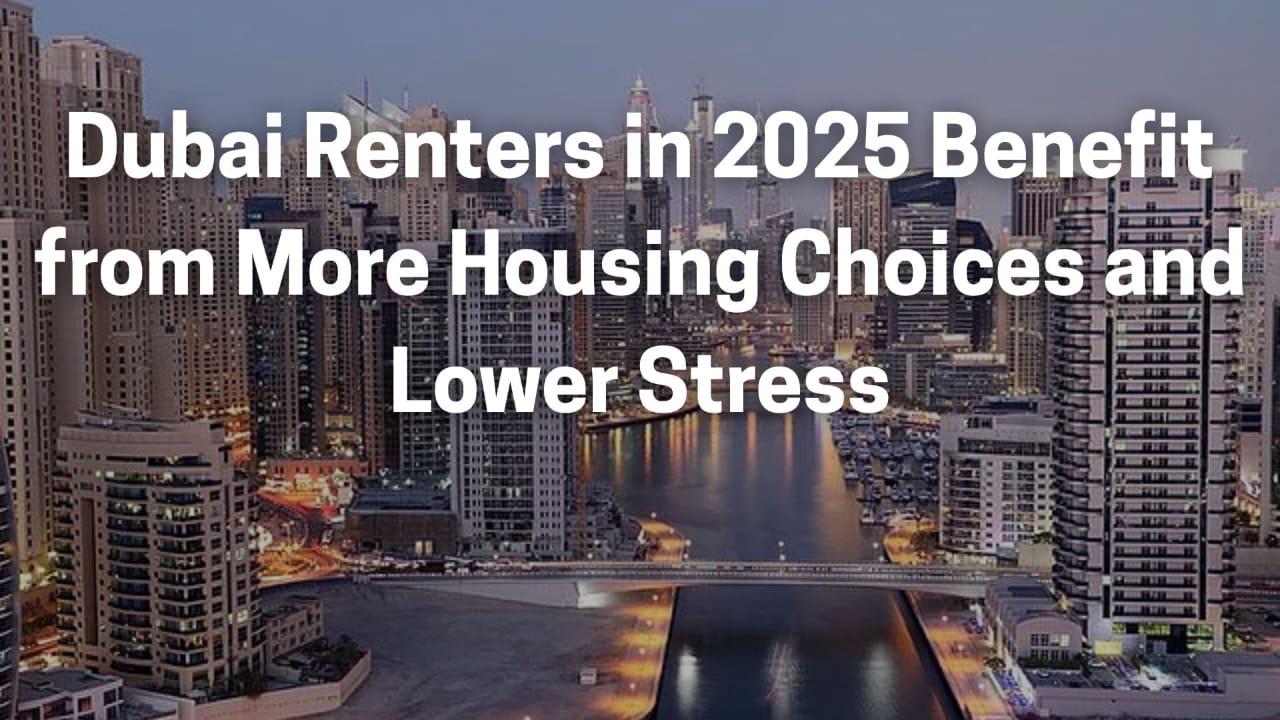John Smith
Alice. 'I've read that in.

With thousands of new homes entering the market, tenants finally have the upper hand - more choices, better prices, and flexible leasing options. Whether you're looking for a short-term stay or long-term comfort, the city's real estate game is shifting in your favor.
Dubai’s real estate market is undergoing a significant shift in 2025, offering a wave of optimism for tenants after several years of consistent rent increases. With an estimated 72,000 new residential units entering the market this year and even more expected in the next two years, tenants across the city are finally gaining leverage in negotiations and finding greater variety in housing options.
The influx of newly built homes—ranging from apartments and townhouses to villas—is softening the supply-demand imbalance that has pushed rents higher over the past few years. The additional inventory is expanding choices for renters, increasing price competition among landlords, and encouraging more tenant-friendly lease terms.
Although rental prices are still rising in some neighborhoods, the pace has notably slowed. In 2024, rental increases reached as high as 15–20% in many parts of Dubai. However, 2025 has brought a moderation, with average increases now hovering between 5% and 10% for long-term rentals. In select mid-tier areas like Deira, Bur Dubai, and parts of Jumeirah Village Circle, rents have even decreased by 3% to 6%. Meanwhile, prime locations such as Downtown Dubai and the Marina are experiencing stable or slightly reduced prices.
The short-term rental market, however, continues to thrive. With Dubai maintaining its global appeal as a tourist and business hub, demand for flexible daily, weekly, and monthly rentals remains strong—especially in areas like Business Bay, JBR, and Palm Jumeirah. Daily rental rates for high-end properties have risen by as much as 14% year-on-year, indicating sustained interest from visitors and temporary residents alike.
For long-term tenants, the biggest advantage this year is the greater affordability and availability in emerging neighborhoods. Areas such as Al Furjan, Dubai South, and Sports City are offering competitive pricing without compromising on amenities or accessibility. One-bedroom apartments in these locations can still be leased for AED 50,000 to AED 60,000 per year—substantially less than similar units in premium zones.
Another driving force behind the shift is the increased regulation and market transparency introduced by authorities. The Dubai Rental Index now plays a more central role in standardizing rental rates. The system prevents landlords from issuing arbitrary or excessive rent hikes, as adjustments must align with the indexed rate range. This has introduced predictability for tenants and reduced disputes during renewals.
The improved market conditions have also changed how landlords approach leasing. More owners are now offering flexible payment plans, such as 1–2 cheque options, rent-free periods, and even early move-in incentives. These trends are reshaping the traditional landlord-tenant relationship into a more balanced and tenant-friendly experience.
Despite the more competitive environment, most tenants are choosing to stay put. In fact, nearly two-thirds of contracts renewed in early 2025 involved tenants staying in their existing homes. This trend reflects both a desire for stability and confidence that the market will remain in tenants’ favor for the foreseeable future.
Additionally, with rental costs stabilizing and mortgage rates becoming more accessible, many long-term residents are considering buying property instead of renting. The gap between rental payments and monthly mortgage installments has narrowed, especially in off-plan projects where developers are offering extended post-handover payment plans. As a result, tenants are increasingly evaluating the benefits of transitioning to homeownership.
Dubai’s rental market is also embracing technology. From virtual property tours to digital lease signings and AI-powered property search tools, the rental experience has become more efficient and transparent. Tenants now expect modern features—like smart-home systems, pet-friendly policies, and proximity to schools, metros, and supermarkets—as part of their housing decision-making.
The city’s rental yields remain attractive for investors too. In emerging communities, yields can reach up to 9%, making them more lucrative than some of Dubai’s traditionally sought-after areas. This investor interest is contributing to continued development and supporting long-term growth in the sector.
In summary, 2025 marks a welcome turning point for tenants in Dubai. The combination of high supply, regulatory reforms, competitive pricing, and smart leasing options is delivering both greater flexibility and reduced stress for residents. Tenants now have the freedom to explore better deals, negotiate terms, and choose homes that fit their budgets and lifestyles—something that was much harder just a couple of years ago.
Dubai’s real estate landscape remains dynamic, but for now, renters appear to be holding the stronger position. With more housing on the way and landlords becoming increasingly responsive to market trends, the city is evolving into a tenant-friendly rental ecosystem that balances supply, affordability, and lifestyle preferences.
Your email address will not be published. Required fields are marked *